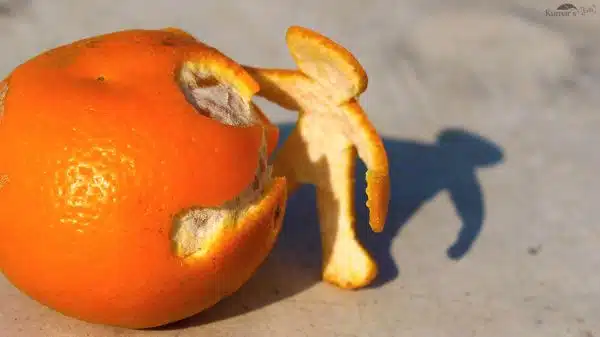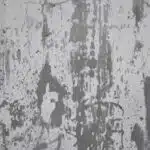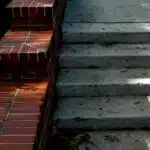As a homeowner, you take great pride in creating a comfortable and visually appealing living space. However, over time, wear and tear can take its toll on your walls. One of the most common issues homeowners face is orange-peel texture on walls, which can be caused by improper painting techniques or drywall installation.
Repairing orange-peel texture on walls may seem daunting, but with the right tools and techniques, it can be easily remedied. In this article, we will provide step-by-step instructions for repairing orange-peel texture on walls, including how to identify the cause of the issue and how to properly prepare the surface for repair. With our expert guidance, you can restore your walls to their former glory and create a beautiful home for yourself and your loved ones.
Understanding Orange-Peel Texture
Orange-peel texture is a common type of wall finish that provides a subtle, bumpy surface. This texture is achieved by spraying a mixture of joint compound and water onto the walls using a hopper gun. The result is a finish that resembles the surface of an orange peel.
However, over time, this texture can become damaged and develop imperfections such as cracks or holes. There are several causes of these imperfections, including improper installation, settling of the house, or simply wear and tear. These imperfections can be unsightly and make the walls look unappealing.
To repair orange-peel texture on walls, it’s essential to first understand the different types of textures and their causes. By doing so, you’ll be able to identify which type of texture your walls have and what might be causing any imperfections. With this knowledge in hand, you’ll be better equipped to choose the right tools and materials needed for repair.
Tools And Materials Needed For Repair
Choosing the right tools and buying the necessary materials is crucial for repairing orange-peel texture on walls. To achieve a professional finish, you will need to use a few specific tools, such as a drywall knife, sandpaper, and a spray gun. The drywall knife is used to apply joint compound to the wall while the sandpaper is used to smooth out any rough spots. A spray gun is needed to apply texture.
When choosing your tools, be sure to consider the size of the area that needs repair. If you are working on a small patch of wall, a smaller drywall knife may be more suitable. On larger areas, however, it’s best to use a wider blade. You can also choose between manual or powered sanders depending on your preference and experience level.
In terms of materials, you will need joint compound and texture spray in addition to your tools. Joint compound is used for filling in any holes or gaps in the wall before texturing. Texture spray comes in various forms such as aerosol cans or larger containers that require mixing with water before application. Be sure to read the instructions carefully before purchasing and using these products.
Now that we have covered choosing the right tools and buying the necessary materials for repairing orange-peel texture on walls, it’s time to identify what may have caused this issue in the first place.
Identifying The Cause Of Orange-Peel Texture
For example, a homeowner recently painted their living room and noticed an orange-peel texture on the walls. The texture was not present before painting, so they were unsure of what caused it. Identifying the cause of orange-peel texture is essential in repairing it properly.
One common mistake that leads to orange-peel texture is incorrect application of drywall mud or joint compound. These materials should be applied evenly and smoothed out properly before drying. If they are not smoothed out correctly, they can leave behind a bumpy texture that resembles an orange peel.
Another cause of orange-peel texture is using the wrong type of paint roller. A high-nap roller can create this texture if used incorrectly. It is important to use a roller with a short nap to prevent this from happening. Prevention techniques include practicing proper technique when applying drywall mud or joint compound and using the correct tools for painting.
With an understanding of the common causes of orange-peel texture, homeowners can take preventative measures during their home improvement projects. In the subsequent section, we will discuss preparing the work area for repairing orange-peel texture on walls.
Preparing The Work Area
After identifying the cause of orange-peel texture, it’s time to prepare the work area. One important step in this process is organizing space. Make sure to remove all furniture and cover any remaining items with a drop cloth. This will protect your belongings from dust and debris during the repair process.
Once the space is organized, it’s essential to clean all tools that will be used for repairing the damaged texture. This includes sandpaper, putty knives, and other necessary equipment. Cleaning these tools beforehand will ensure that they function properly and produce optimal results.
To further prepare the work area, make sure to also clean the walls themselves. Any dirt or debris on the surface can interfere with the repair process and lead to an uneven texture. Use a damp cloth or sponge to wipe down the walls before proceeding with removing damaged texture.
Transition: Now that you’ve prepared your workspace by organizing space and cleaning tools, it’s time to tackle removing damaged texture from your walls.
Removing Damaged Texture
A textured wall with orange-peel pattern can look stunning when in good condition. However, over time, the texture may become damaged due to various reasons such as water damage, accidental knocks, or poor installation. When this happens, repairing drywall and removing damaged texture is necessary to restore your walls’ beauty.
To remove damaged texture, you will require some tools such as a putty knife, sandpaper, painter’s tape, and a dust mask. Start by using a putty knife to scrape off any loose or peeling texture from the affected area. Be careful not to damage the underlying drywall while doing this. Next, use sandpaper to smooth out the edges of the remaining texture and feather it into the surrounding area. This technique ensures that there are no noticeable differences between the repaired and undamaged areas.
Once you have removed all the damaged texture and smoothed out the area using sandpaper, it’s time to proceed with repairing drywall if necessary. Check for any cracks or holes in your wall and patch them up using spackling compound. After allowing it to dry overnight, sand down any excess compound until it blends smoothly with the rest of your wall’s surface. With this process complete, you can now move on to sanding the surface before applying new texture to your wall.
Sanding The Surface
After removing the damaged texture from your walls, the next step is to sand the surface. Sanding is important for achieving a smooth and even finish, which is essential for repairing orange-peel texture. There are several types of sandpaper that you can use for this task, including coarse, medium, and fine grits. The type of sandpaper you choose depends on the severity of the orange-peel texture and the condition of your walls.
When sanding your walls, it’s important to use proper techniques to avoid damaging the surface or creating new imperfections. Start by using a coarse grit sandpaper to remove any high spots or bumps on the surface. Then switch to a medium grit sandpaper to smooth out any rough areas and create an even surface. Finally, use a fine grit sandpaper to achieve a smooth finish that is ready for priming and painting.
In addition to using proper sanding techniques, it’s important to take your time when working on each section of your wall. Rushing through this process can lead to mistakes and uneven results. By following these tips and taking your time with each section of your wall, you can achieve a smooth and even finish that will look great once you apply primer and paint.
Applying Primer
Did you know that using primer can help reduce the amount of paint needed for your project by up to 30%? Applying primer is an essential step in repairing orange peel texture on walls. The right type of primer will fill in any imperfections and create a smooth surface, allowing for easier paint application.
When selecting a primer for repairing orange peel texture, it’s important to choose a product specifically designed for this purpose. Look for primers that are high-build, meaning they have a thicker consistency and can fill in deeper imperfections. Additionally, opt for a primer with good adhesion properties to ensure it sticks to the wall surface properly.
Applying primer requires some technique to get the best results. Start by cutting in around the edges of the wall with a brush, then use a roller to apply the primer over the larger areas. Work in small sections, applying enough pressure to ensure even coverage without leaving streaks or drips. Allow adequate drying time before proceeding with the next step of mixing texture compound.
Mixing Texture Compound
- When repairing orange-peel texture on walls, it is important to mix the texture compound correctly in order to achieve the best results.
- The texture compound must be mixed to the manufacturer’s recommended ratios to ensure proper performance.
- The ratios of the compounds should be adjusted based on the texture desired and the viscosity of the texture compound.
- Incorrectly mixed texture compound may cause the repair to be unsuccessful and result in an uneven finish.
Mixing Compound
The process of repairing orange-peel texture on walls requires a certain level of expertise and precision. One important step in this process is mixing the texture compound, which can be accomplished through various techniques. To ensure a successful repair, it is crucial to understand the importance of proper mixing techniques and compound consistency.
When mixing texture compound, it is important to first determine the appropriate consistency for the job at hand. The consistency should be thick enough to hold its shape but thin enough to spread smoothly. Achieving this balance may require some trial and error, as different compounds may have varying consistencies. It is also important to mix only the amount of compound that will be used within a reasonable timeframe, as excess mixture can dry out and become unusable.
To achieve the desired consistency, there are several mixing techniques that can be utilized. One approach involves using an electric drill with a mixing attachment or paddle to blend the compound thoroughly. Another method involves manually mixing the compound with a trowel or putty knife until it reaches the desired consistency. Regardless of the technique used, it is important to mix the compound thoroughly, ensuring that there are no clumps or dry spots.
In conclusion, proper mixing techniques and consistent compound density are essential in achieving a successful orange-peel texture repair on walls. With careful attention paid to these steps, homeowners can achieve professional-looking results without needing professional help.
Compound Ratios
Moving on to another important aspect of mixing texture compound, let’s discuss the significance of compound ratios. The right mixture of water and compound can be crucial in achieving the desired consistency and texture for your walls. It is important to follow the manufacturer’s instructions when it comes to choosing the right ratio, as different compounds may require varying amounts of water. Additionally, getting this ratio wrong could lead to issues such as cracking or longer drying times.
To ensure that you are using the correct amount of water for your texture compound application, start by adding a small amount of water to the dry mix and gradually increase until you reach the desired consistency. It is important to avoid over-watering the mixture, as this could lead to a thinner consistency and potentially cause dripping or sagging during application. A good rule of thumb is to aim for a peanut butter-like consistency.
Lastly, keep in mind that compound ratios can also affect drying time. Too much water may lead to a longer drying time whereas too little water could result in quicker drying times but with an uneven finish. Therefore, it is essential not only to follow the manufacturer’s instructions but also pay close attention during mixing and application processes for optimal results.
Applying Texture Compound
After properly mixing your texture compound, the next step in repairing an orange-peel texture on walls is to apply it. However, before doing so, it is important to take note of some common mistakes that people make when applying the compound. One common mistake is using too much pressure when applying the compound, which can result in an uneven texture. Another mistake is not allowing enough time for the compound to dry between coats.
When it comes to repairing orange-peel texture on walls, there are different textures that you may encounter. These include fine orange peel, medium orange peel, and heavy orange peel. Knowing which type of texture you are dealing with will help you determine how much compound you need to apply and how to properly blend it in.
To ensure a seamless finish when repairing orange-peel texture on walls, feathering and blending are crucial techniques that should be employed. Feathering involves gradually spreading out the edges of the applied compound until they blend naturally with the surrounding area. Blending involves using a tool such as a trowel or brush to create a smooth transition between the repaired area and the rest of the wall.
Remember that proper application techniques and attention to detail are key factors in achieving a professional-looking result when repairing orange-peel texture on walls. By avoiding common mistakes and utilizing appropriate techniques such as feathering and blending, you can successfully restore your wall’s textured finish.
Feathering And Blending
Blending techniques can be a lifesaver when it comes to repairing orange-peel texture on walls. The key is to feather the edges of the repair area, so they blend smoothly with the surrounding texture. This can be challenging because it requires patience and skill to get just right. However, if done correctly, blending techniques can produce a seamless repair that is virtually undetectable.
One of the most significant challenges in repairing orange-peel texture is achieving consistency in texture density across the entire wall surface. To do this, you need to carefully match the size and pattern of the existing texture. Using a spray gun or hopper can help achieve this goal by allowing you to apply an even layer of drywall compound over the repaired area. Once applied, use a trowel to blend and smooth out any rough edges.
After blending and smoothing out your repaired area, it’s crucial to let the texture dry completely before proceeding with any further steps. If you don’t give it enough time to set, you risk damaging all your hard work by accidentally scraping off any newly formed peaks or valleys. So be patient and let nature take its course. Once everything has dried thoroughly, you’ll be ready for whatever comes next!
Letting The Texture Dry
Once you have applied the orange-peel texture to your walls, it is important to allow it sufficient time to dry completely. Generally, this process takes up to 24 hours; however, drying times may vary depending on the humidity and temperature of the room. It is advisable to wait a few additional hours before checking if the texture has dried.
Tips for preventing any issues with drying the orange peel texture include minimizing ventilation in the room and avoiding turning on air conditioning or heating systems. This will assist in maintaining a consistent temperature and humidity level in the room, enabling the texture to dry uniformly. In addition, it is vital not to touch or disturb the surface of the wall while it is drying as this can cause imperfections in the texture.
Once you have allowed sufficient time for drying, inspect your wall for any areas that may require additional application of texture. Make sure that all parts are thoroughly dry before applying a second coat. When you are happy with your repair work, it is time to move on to sanding and priming the repaired area.
Sanding And Priming The Repaired Area
Did you know that the key to achieving a smooth, flawless finish on your repaired walls is in choosing the right primer? According to a survey conducted by a leading home improvement magazine, 85% of professional painters believe that primer is essential for achieving a professional-looking finish. That being said, it’s important to choose the right primer for your specific needs.
When it comes to sanding the repaired area, there are several techniques you can use to achieve a smooth finish. Start by using a fine-grit sandpaper (such as 220-grit) and work in circular motions over the entire area. Be sure to pay extra attention to any rough or raised spots until they are level with the surrounding area. Once you’ve sanded down any high spots, switch to a finer grit sandpaper (such as 320-grit) and repeat the process until you have achieved a completely smooth surface.
After sanding, it’s time to apply your chosen primer. If you’re repairing drywall, be sure to choose a drywall primer specifically designed to fill in small imperfections and create an even base for painting. Apply your primer using long, even strokes with a paintbrush or roller, being careful not to leave behind any brush marks or streaks. Allow your primer to dry completely before moving on to painting the repaired area.
Painting The Repaired Area
Once the repaired area has dried completely, it is time to paint it. Choosing the right paint will ensure that the repair blends in seamlessly with the rest of the wall. It is important to use a paint with a similar sheen and color as the surrounding area. If there are multiple layers of paint on the wall, it is best to bring a sample of each layer to a home improvement store for color matching.
When it comes to touch up painting, there are a few tips that can make the process easier and more effective. First, use a small roller or brush that matches the size of the repaired area. This will help blend in the texture and avoid creating noticeable lines or bumps. Second, apply multiple thin coats instead of one thick coat. This will ensure that the repaired area does not stand out from the rest of the wall.
In addition to repairing orange-peel texture, it is important to take steps to prevent it from happening again in the future. In our next section, we will discuss some tips for preventing orange-peel texture on walls. By following these preventative measures, you can ensure that your walls remain smooth and even for years to come.
Tips For Preventing Orange-Peel Texture
After painting the repaired area, it’s important to take certain preventive measures to avoid the occurrence of orange-peel texture on walls. One common mistake is applying too much paint at once. This can lead to a buildup that creates an uneven surface, resulting in the orange-peel texture. To avoid this, apply thin coats of paint and wait for each coat to dry completely before applying the next one.
Another preventive measure is to always use high-quality paint and materials. Cheap paints tend to have a higher viscosity, which leads to uneven application and ultimately, orange-peel texture. Additionally, using low-quality rollers or brushes can also cause this issue. Invest in good quality rollers and brushes for smooth application and prevention of orange-peel texture.
In summary, preventing orange-peel texture on walls requires proper techniques when painting and using high-quality materials. Avoiding common mistakes such as applying too much paint at once or using cheap paints and tools will go a long way in achieving a smooth finish without any unwanted textures. With these preventive measures in place, you can enjoy your newly painted walls for years to come with no need for repair.
Final Thoughts On Repairing Orange-Peel Texture
Assessing the effectiveness of your orange-peel texture repair job is crucial in ensuring that you have done it right. A good way to do this is by comparing the repaired area with the surrounding walls. If the texture and appearance match, then you have done a great job. On the other hand, if there is a visible difference, then you need to consider redoing the repair work.
It’s essential to avoid common mistakes when repairing an orange-peel texture on walls. One mistake people often make is using too much drywall compound or mud during repairs. This can result in uneven surfaces that may require even more repair work. Another mistake to avoid is not sanding down properly between coats of paint or primer. This can lead to rough patches and uneven textures on your wall.
In summary, repairing orange-peel texture on walls requires attention to detail and careful execution. By assessing effectiveness and avoiding common mistakes, you can achieve excellent results that blend seamlessly with the rest of your wall. Remember always to take your time and don’t rush through any step in the process for the best results possible.
Conclusion
Orange-peel texture on walls can be an eyesore, but with the right tools and materials, it can be repaired. Understanding the cause of orange-peel texture is important in order to prevent it from happening again. Proper preparation of the work area and removal of damaged texture is necessary for a successful repair. Sanding and priming the area before painting will ensure a smooth finish.
To prevent orange-peel texture from occurring in the future, take precautions such as using the correct paint sprayer settings and properly thinning paint. Overall, repairing orange-peel texture on walls requires patience and attention to detail, but with these steps, a flawless finish can be achieved.
Remember to identify the cause of the issue before beginning repairs. Take your time sanding and priming for best results. And always remember to prevent future issues by taking appropriate precautions during painting. With these tips in mind, you’ll be able to repair any orange-peel texture that comes your way!
Image Credits
- “Human Shapes from orange outer peel #2” by Jangra Works (featured)





























